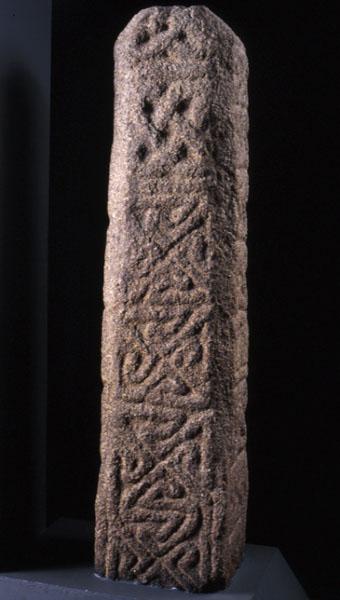Late Saxon cross–shaft
Back to Time Period
The granite shaft is decorated with simple interlaced patterns, broadly datable to the 10th or 11th centuries. It would formerly have been surmounted by a head in the form of a cross. Six such cross-shafts survive in Devon, the others being at Colyton, Copplestone, Dolton, Sidbury and Chulmleigh. The shaft’s original site is not firmly known, but it may by the ‘Toisa’s Cross’ (St Osyth’s Cross), which stood outside the West Gate in the middle ages. It was found re-used in the fabric of old Exe Bridge in 1778, then served as a bollard protecting one corner of a house at the junction of High Street and Gandy Street, moved to St Nicholas Priory in 1911 and indoors to our museum in 1991.
Acknowledgments: © 2015 Royal Albert Memorial Museum & Art Gallery, Exeter City Council



















